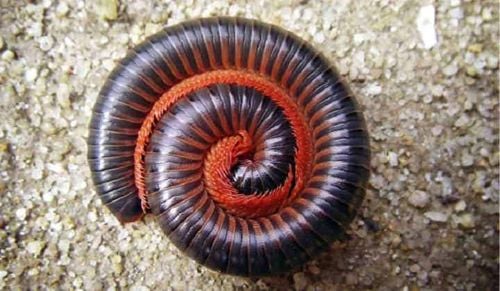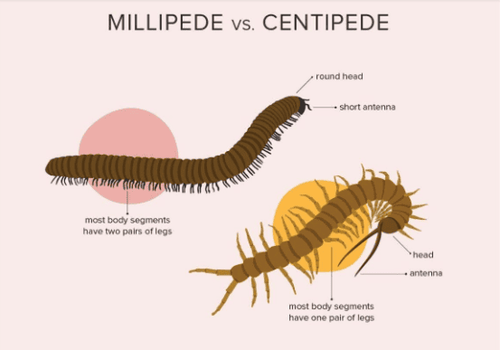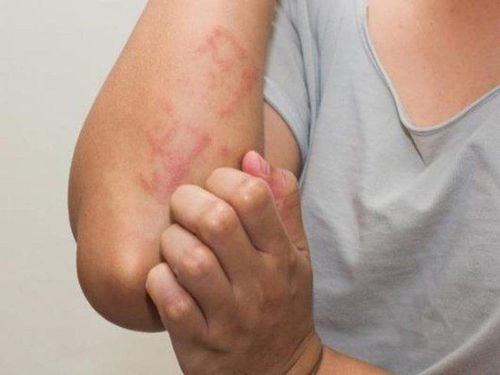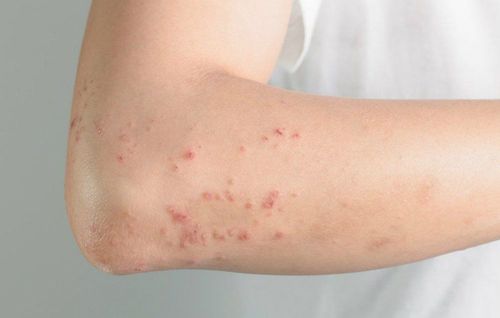Article by MS. Mai Vien Phuong, MD – Department of General Consultation & Internal Medicine – Vinmec Central Park International General Hospital
Millipedes are one of the oldest decomposers found in most regions around the world. Although millipedes are not toxic to humans, they can cause allergic reactions.
1. Do Millipedes Bite?
Millipedes defend themselves by curling into a ball when threatened. They do not bite.
In some cases, they may release toxins from their glands to defend against predators such as:
- Spiders
- Ants
- Other insects
Some millipedes can spray their toxins several feet away when they detect a threat.

2. Are Millipedes Toxic?
Hydrochloric acid and hydrogen cyanide in millipedes have a burning effect and can suffocate their predators.
In large amounts, these toxins can also be harmful to humans. However, the small amount of toxin released by millipedes is unlikely to cause poisoning in humans.
3. You May Be Allergic to Millipedes
Although the fluid released by millipedes is not toxic to humans, it may irritate the skin or cause an allergic reaction. If you are allergic to millipedes, you may notice the following symptoms after handling them:
- Blisters
- Skin redness
- Rash
- Itching and/or burning
Severe allergic reactions to millipedes:
- Swelling of the face
- Difficulty breathing
- Rapid heartbeat
- Widespread rash
If you experience any of the symptoms above, you should seek medical attention immediately.
4. What Is the Best Treatment for Blisters Caused by Millipedes?
The toxins from millipedes can cause blisters and burns. Immediately wash the affected area. This can help prevent potential allergic reactions.
If you get blisters from a millipede, wash the skin with warm water and regular soap. Aloe vera gel can also help soothe the blisters.
Over-the-counter antihistamines like Benadryl can help reduce itching. You can also treat the rash with skin-soothing creams, such as oatmeal-based lotions or hydrocortisone cream.
Be careful not to rub your eyes after handling millipedes. The toxins from arthropods can lead to conjunctivitis and other eye irritations.
Make sure to wash your hands thoroughly after handling millipedes, even if you don't think you are allergic or have any reactions.
5. The Difference Between Millipedes and Centipedes
Some species of centipedes can be much longer than millipedes, and vice versa. Centipedes have a flatter appearance and may resemble small, legged snakes, unlike the harmless worms that millipedes resemble.
Centipedes have one pair of legs per body segment, compared to two pairs per segment in millipedes. Centipedes also have longer legs and antennae.
Unlike millipedes, centipedes can bite humans if they feel threatened. The bite is thought to feel like an insect sting. The symptoms may last for a few days or longer in more severe cases.

6. Millipede Habitats
Millipedes prefer dark and humid environments. They like to hide in the soil or under debris such as leaves, decaying wood, and mulch.
These arthropods can be found all over the world, with the largest and most allergenic species found in tropical regions such as:
- The Caribbean
- The South Pacific
As a general rule, the larger the millipede species, the more likely its toxins will harm your skin. Larger species release higher amounts of toxins to defend against their predators.
7. How to Prevent Millipedes in Your Home
Millipedes appear in damp areas and often hide under debris such as piles of leaves.
Sometimes millipedes may enter your home in search of moisture.
Although they won't bite or cause any other bodily harm, millipedes can become a nuisance if they reproduce and decide to make your home their own.
Millipedes will quickly die without moisture. Therefore, keep your home dry and clean.
Until now, more than 12,000 living millipede species are known worldwide. None of these have been reported to be toxic to humans. However, it is important to be cautious with any animal.
Visit a doctor if any allergic or irritation symptoms do not subside with at-home care.
To arrange an appointment, please call HOTLINE or make your reservation directly HERE. You may also download the MyVinmec app to schedule appointments faster and manage your reservations more conveniently.








